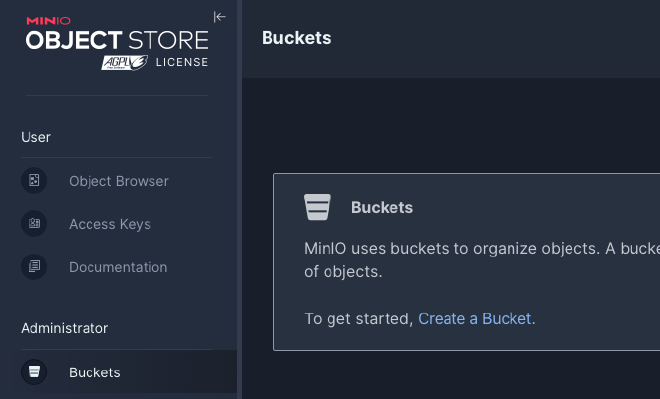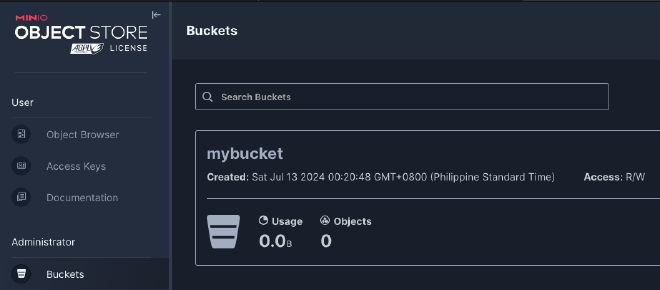Custom Endpoints for AWS S3 CLI
You can use the AWS S3 CLI with compatible object storage services like NooBaa, Rook, and MinIO using the following template for the commands:
export AWS_ACCESS_KEY_ID=<endpoint-username>
export AWS_SECRET_ACCESS_KEY=<endpoint-password>
aws --endpoint-url <endpoint-url> s3 <command>
To demonstrate, we’ll set up MinIO with a container:
docker run -p 9000:9000 -p 9001:9001 quay.io/minio/minio server /data --console-address ":9001"
Browse to http://localhost:9001 and log in with minioadmin:minioadmin.

Create a bucket (we’ll call ours mybucket).

We can view the bucket using these commands:
$ export AWS_ACCESS_KEY_ID=minioadmin
$ export AWS_SECRET_ACCESS_KEY=minioadmin
$ aws --endpoint-url http://localhost:9000 s3 ls
2024-07-12 00:02:03 mybucket
Uploading a file should work, and we can view it with the AWS CLI:
$ echo hello | aws --endpoint-url http://localhost:9000 s3 cp - s3://mybucket/hello.txt
$ aws --endpoint-url http://localhost:9000 s3 ls s3://mybucket
2024-07-12 00:30:20 6 hello.txt
Here is the same file viewed in the MinIO UI:
